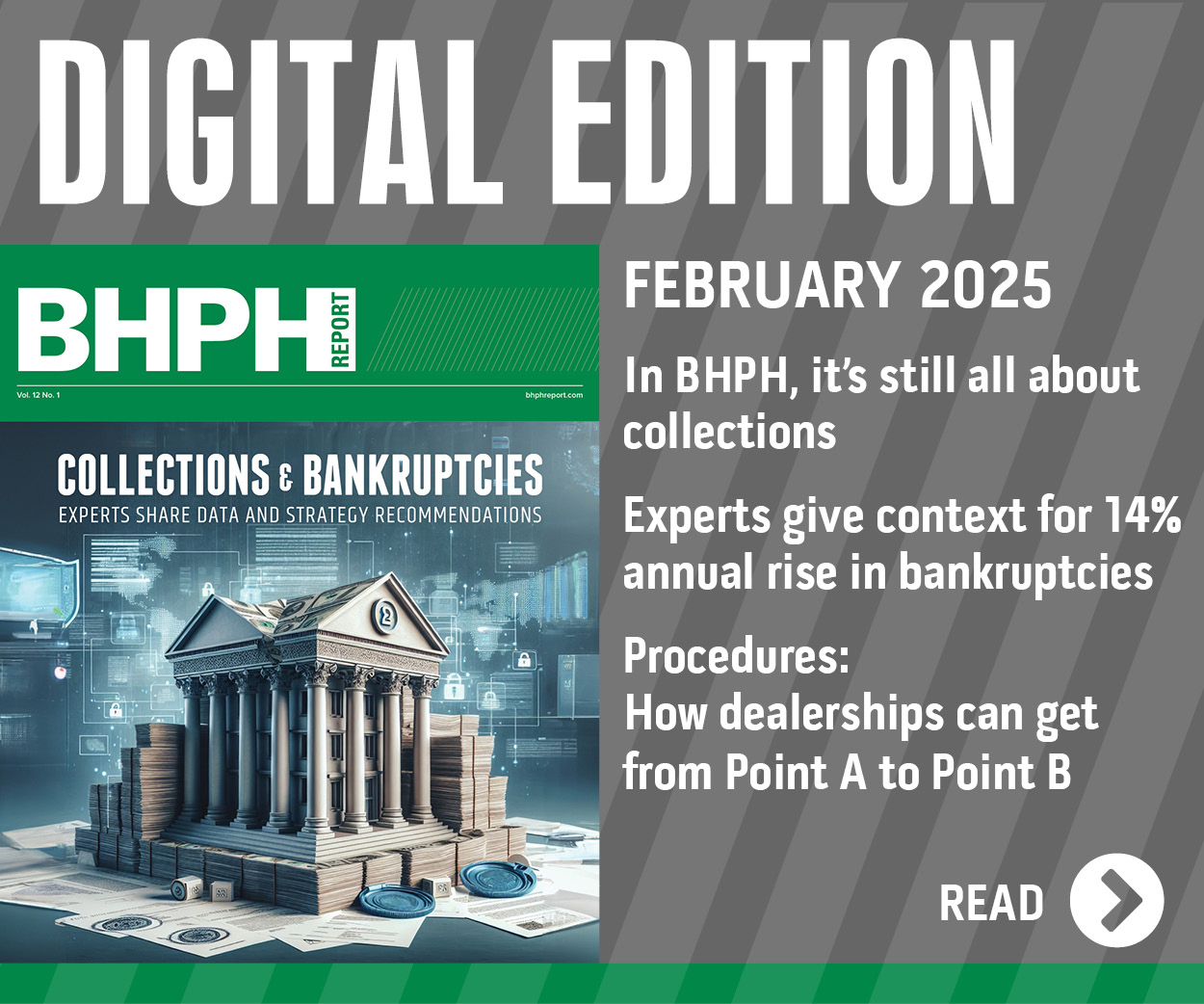Shilson: Does More Really Equal Less In The Deep Subprime Auto Finance Industry?

At the end of 2013 after reviewing Experian Automotive data, I wrote that losses for special finance companies in the subprime auto finance industry were trending upward sharply. I attributed these higher losses to overly aggressive underwriting “silly loans” caused by putting “too much vehicle in the hands of too little customer.” This practice continued during the entire fourth quarter of 2013.
It has now become apparent that this aggressive special finance underwriting was designed to increase market share in search of higher yields.A recent report by Standard & Poor’s entitled, “Subprime Loan Performance: Te Best is Behind Us,” indicates that “growing losses may push lenders to tighten credit standards.” This may not cause a financial collapse or crisis but will certainly have a near-term impact on the automotive finance industry.
Car sales (particularly used-car sales to deep subprime customers) are highly sensitive to credit availability. More than 20 percent of the borrowing to buy new vehicles since 2011 has been driven by an increase in credit to subprime and deep subprime customers. Te proportion of auto loans to customers with lower credit scores increased by 27 percent in 2013, up from 18 percent in 2009, according to the S&P report.
The aforementioned increase in subprime credit can be directly attributed to the Federal Reserve’s low interest rates, which encouraged investors to “buy anything that pays more than inflation, including securities backed by subprime auto loans.” When default rates were low and finance charges were high, it appeared that lenders could earn double-digit returns. Those attractive “paper profits” attracted more competitors who made the auto finance environment even more aggressive. However, “not all is gold that glitters and shines!”
Standard and Poor’s today reports that subprime auto loan delinquencies are increasing sharply, despite the fact that alleged unemployment is falling and wages are growing.”
The Experian Automotive data recently released for the fourth quarter of 2013 shows that repossessions for special finance companies were up 76.3 percent over the same quarter of 2012.Repossession rates for finance companies were the highest since 2006 and their average charge-off was $8,772.
Entering 2014, the subprime auto finance industry appears to have reached an important turning point.
What Does This Mean for BHPH?
Unfortunately, I do not have a crystal ball and must use the benefit of hindsight and analytics to predict the future.
The tax season for the deep subprime and buy-here, pay-here industries have started strongly in 2014 and is better than 2013. Competition from special finance in many parts of the United States (Texas, particularly) has declined.
In 2013, the BHPH industry lost subprime customers to overly aggressive special finance Lenders and experienced increases in voluntary repossessions, as their customers were “seduced” into buying late model vehicles with repayment terms they could not afford.
The most prudent BHPH operators resisted the temptation to match these “silly loans” and opted to pass on that business. The aforementioned finance company loss metrics validates those decisions!
In 2014, the BHPH industry will benefit as special finance customers default on their overly aggressive loans and return to the BHPH marketplace.In addition, the availability of vehicles will increase, as more repos are re-marketed. This should keep the price of good, quality inventory at “reasonable” levels. More cars and more customers without finance company competition will be good for the BHPH industry in 2014 and beyond!
BHPH operators positioned to capitalize on these improved profit opportunities should prosper during the later part of 2014 and next year.
My definition of “positioned” implies that they have the facilities, capital, technology and The systems to handle the growth efficiently and profitably. One more thing: they must survive growing compliance challenges, which are imminent in the near future, as regulatory agencies like the CFPB, FTC, state Attorneys General and other state agencies “look under their hood”.
In conclusion, it now appears that these overly aggressive special finance companies did not really prosper from buying our best BHPH customers; they just rented them for a few months.
Ken Shilson is president of Subprime Analytics (www.subanalytics.com) a consulting company that provides subprime portfolio analysis services and custom credit scoring solutions (Profit Max). Subprime Analytics utilizes state-of-the art data mining and extraction technology in order to identify loss trends and areas for underwriting improvement. Questions can be directed to him at ken@kenshilson.com. Shilson is also founder and convention chairman of the National Alliance of Buy-Here, Pay-Here Dealers (NABD). For information about upcoming BHPH training events visit their website at www.bhphinfo.com or call (832) 767-4759.


